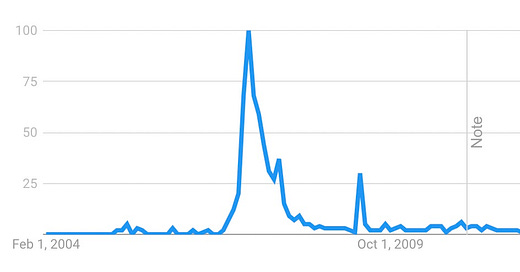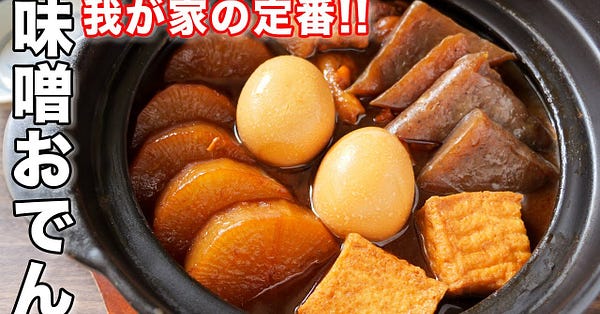This is How to Japanese, a monthly newsletter with something about Japan/Japanese and a dash of いろいろ.
日本・日本語: だけ
As a long-term, rapidly-aging student of Japanese, you can date yourself through the slang that was used early in your studies. I have a couple very specific examples myself, of course.
My third-year teacher shared a news article about コギャル語 (kogyaru-go, lit. “high-school girl language”) that I vividly remember. The article highlighted the adverb チョベリ (choberi, “extremely very”), which I can imagine some cheeky high school students inventing while bored during English class. チョベリ consists of an abbreviated version of the native emphasizer 超 (chō, extremely) sandwiched together with the English-derived emphasizer ベリ (beri, “very”) to create a Voltron-esque super emphasizer.
チョベリ was then stacked on to other words, notably the ridiculous adjectives グ (gu, “good”) and バ (ba, “bad”), giving us チョベリグ (choberigu, extremely very good) and チョベリバ (choberiba, extremely very bad). These words were hilarious to me as a college student, and they still are now. They’re also hilarious to many Japanese people when I occasionally use them, but only because they date to an extremely small window of time from 2002-2003. In English, the only comparison I can think to make would be wobbling around yelling “Sharon!” with dark sunglasses on indoors, but this comparison would only really work if a meteor had struck the Osbournes in December 2003 and they had been eradicated from global pop culture. Because a meteor of sorts did strike チョベリ, and that meteor was time. Time is a goon. The language moved on, and チョベリ was not invited to the party.
I was thinking about this phrase the other day not only because it’s the time of year to look back and take stock of what new language we’ve ushered into the lexicon the past year (many of which, like チョベリ, will soon be played off the stage), but also because I was thinking about だけ (dake). だけ is a particle that generally gets translated as “only.” For example, take this sentence from an editorial in the Mainichi about Trump’s decision to run in 2024:
大統領経験者の再出馬は過去に4人しかおらず、返り咲いたのは1892年のクリーブランド氏だけだ。
Only four past presidents have run again, and (Grover) Cleveland in 1892 was the only one to recapture the presidency.
(Ignore the other “only” in this sentence, which is a separate particle, しか.)
This is basically how I understood だけ, even after graduating and moving to Japan to teach on the JET Program. It’s a particle that expresses limits of an amount/degree.
But at some point in my second year, the phrase どんだけ~ (dondake) exploded into the lexicon thanks to TV personality/makeup artist IKKO. I mean, look at this Google Trend search. That isn’t a COVID wave. That’s interest over time in the phrase どんだけ.
I had trouble parsing it. My conception of だけ as “only” just didn’t fit.
“It doesn’t mean anything. It just means ‘Whatever~’,” one of my fellow JETs said at the time, which is true but also not true. Wikipedia notes that the phrase originated in the Shinjuku 2-chōme community and that when IKKO introduced it on the TV show リンカーン for the first time for a wide audience, she said 言葉自体に意味はなく言うと盛り上がる (“The word itself doesn’t mean anything, you just say it to liven things up”).
It’s not true because どんだけ is an abbreviated form of どれだけ (doredake), which is an entirely separate part of the language with definite meaning. Along with これだけ (koredake) and それだけ (soredake), these だけ don’t easily take “only” as an English translation. And this is because only one of だけ’s three definitions means “only.” Take a look:
1 分量・程度・限度を表す。…ほど。…くらい。…かぎり。
2 範囲を限定する意を表す。…ばかり。…のみ。
3 慣用的に用いられ、種々の意を表す。
1. Expresses a volume/amount/limit - As much as… (…ほど), About … (…くらい), With the limit of… (…かぎり)
2. Expresses the limit of an extent. Only… (…ばかり) Just… (…のみ)
3. Used idiomatically for various meanings.
This first definition is what I didn’t understand. だけ at its core is an amount. An amount of what, you may ask, and I’d say it’s an amount of change or a relative amount. Something changes and だけ expresses the difference between those two states. Or you’re expressing the amount that something is different from some other relative amount.
Let’s take a look at a few more editorials from the Mainichi. Here’s one about the J-Alert System:
10月4日に弾道ミサイルが日本列島を飛び越えた際も、発令が遅れ、「避難が間に合わない」と不満の声が出た。発令までの時間をどれだけ短縮できるのか、検討が欠かせない。
When the ballistic missile passed over Japan on October 4 as well, the system’s announcement was delayed, and many complained that evacuations would not have taken place in time. It is critical that the government look into how much the time until announcement can be shortened.
Here the government needs to looking into how much they can streamline the missile warning system. It currently takes a long time to make the announcement and that needs to be shortened for it to be effective.
And here’s another about Prime Minister Abe’s sakura viewing party controversy:
会の主催者は首相だ。これだけ疑惑が深まっているのに、それでも説明責任から逃れようというのか。
The host of the event is the prime minister. Can he evade taking responsibility despite suspicions growing (so much)?
In this case, the change has already happened/is happening. The suspicions have grown or “deepened,” to borrow the Japanese language. The degree of that change, obviously only measurable in the most abstract, subjective sense, is represented by これだけ.
I wasn’t able to find a それだけ in the Mainichi that wasn’t an “only” example, so please accept this sentence from an Amazon review instead:
新聞の購読は続けます。それだけすばらしい新聞です。
I’ll continue subscribing to the newspaper. That’s how amazing of a newspaper it is.
The newspaper is so amazing that the reviewer will continue the subscription. The それだけ represents the difference in the amount between a newspaper of zero interest and a newspaper that will keep you paying.
Which brings us back to どんだけ. You can see from this TV spot that it’s used in the exact same way as どれだけ.
The phrase used is Xになる・する時間はどんだけ~? (How much time does it take to X?) , and the examples they give are “turning a baseball stadium into a soccer pitch” and “eating the Top 30 items on a best cost performance menu.” The emphasis is on the difference between viewer expectations and the actual time it takes to do these activities. Both are likely accomplished a lot more quickly than viewers may first guess.
So, what is the relative amount/change when どんだけ~ gets used absolutely on its own? I think it’s something that would be measured with a word like “crazy” or “strange” or “funny.” So the best English translation is something like, “Oh. My. God. How crazy is that?”
Only took me 15 years to figure that one out! Going back to a Japanese dictionary definition can be super helpful, and I recommend doing so frequently. The other key is finding a replacement for words that are confusing. Jay Rubin recommends this with 訳 (wake), which is another word that has a sort of abstract feel that becomes much more concrete with you start replacing it with 理由 (riyū, reason). In this case, I think substituting in ほど (hodo, much/about) or くらい (kurai, much/about) can be helpful when you’re still wrapping your brain around all the uses of だけ.
いろいろ
“Money is a social fact, even when the money is Bitcoin or Ether.” This article is about crypto, but in a broader sense it’s about money and value and how those are distributed and transferred. It’s one of the more remarkable things I’ve read recently, and I recommend sitting through all 40,000 words.
It does seem like Twitter is dying :( This is really too bad, since I’ve gained so much from Twitter. But you can find me on basically every other social media platform at howtojapanese. There does seem to be a sizable chunk of the translation community moving to Hive, but I’ve also set up on Mastodon.
This was a great recipe. Highly recommend cooking it up this fall/winter.
This TikTok video is a very clear explanation of は v が.
I’ve really been enjoying all the very late-2000s blog posts about Japanese snacks that the Edge browser servers me up from the default page once I switched the language/region into Japanese.
My local gym is closed on Mondays, so I’ve been doing pull-ups at a park I found on this very impressive website that lists all the places in the country (!) where you can do pull-ups outside. I had no idea 懸垂 (kensui) was the word for “pull-up.”
This was an interesting look at a controversy about a prefectural museum that purchased a few Andy Warhol pieces.
 Really in depth article about this situation. I'm not sure if the outcry would be so loud if it wasn't pop art, or if it were somewhere less rural. Japanese prefectural museums are so great. The Aomori museum mentioned is world class. Absolutely worth visiting.Eyebrows are being raised over Tottori Prefecture’s ¥300 million outlay on Andy Warhol artworks. https://t.co/BFN18HApBV
Really in depth article about this situation. I'm not sure if the outcry would be so loud if it wasn't pop art, or if it were somewhere less rural. Japanese prefectural museums are so great. The Aomori museum mentioned is world class. Absolutely worth visiting.Eyebrows are being raised over Tottori Prefecture’s ¥300 million outlay on Andy Warhol artworks. https://t.co/BFN18HApBV The Japan News @The_Japan_News
The Japan News @The_Japan_News







